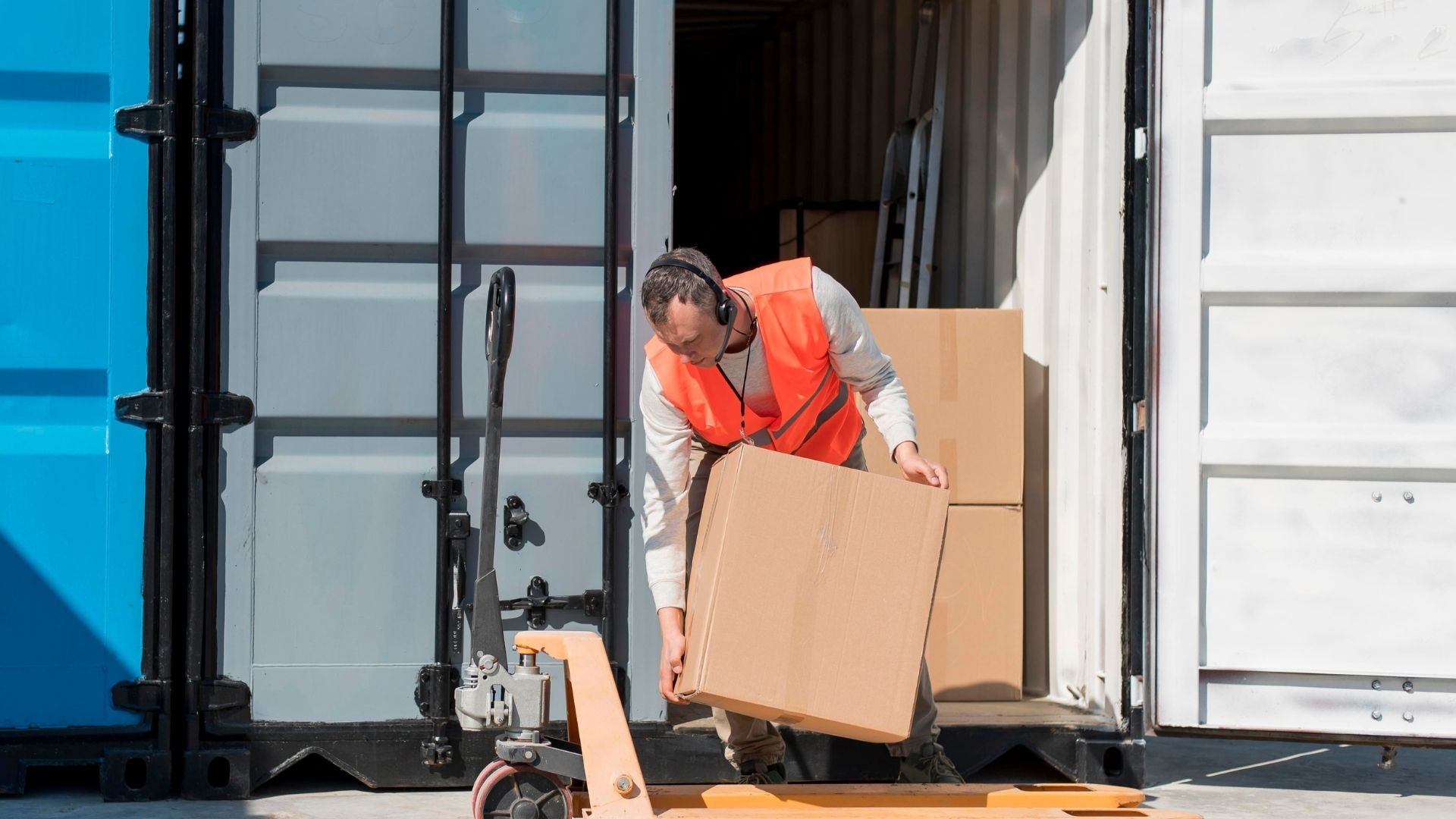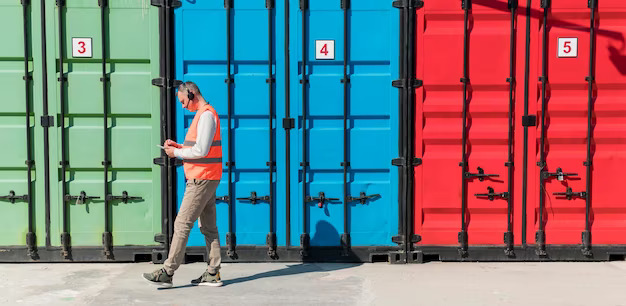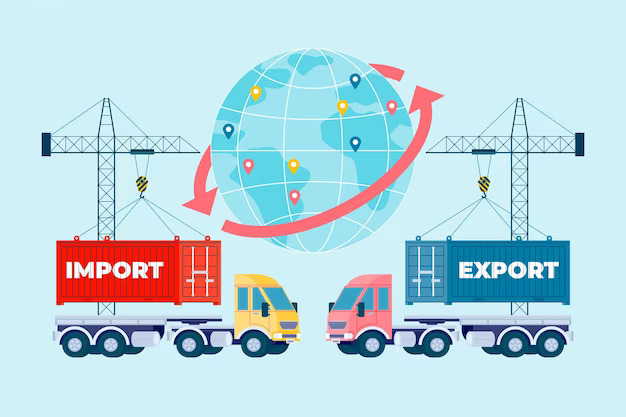Do you know? A study estimates that the global financial impact of cargo loss exceeds $50 billion annually. The issue of cargo loss or damage is a prevalent challenge encountered by nearly every business with a supply chain, resulting in significant problems such as revenue loss and damage to reputation. Cargo loss can occur for various reasons, but one of the reasons for cargo damage is not implementing proper security measures during transport.
Here are ten essential tips to comprehensively secure your shipping container. By applying these strategies, you can protect your valuable goods and reduce the risk of unauthorized access or theft. Furthermore, we have discussed the significance of top-notch shipping container movers in this.
Step 1: Choose the Right Container
Selecting the appropriate shipping container is the foundation of a successful cargo security strategy. When it comes to container security, quality matters. Investing in a container made of high-quality materials and equipped with robust locking mechanisms is essential. Reputable shipping container movers can provide you with options that meet these criteria.
Shipping containers come in various sizes and materials. The most common types are steel containers, which are renowned for their durability and security. They are resistant to harsh weather conditions, corrosion, and physical tampering. Additionally, consider containers with advanced locking mechanisms that are not easily compromised.
Step 2: Conduct Regular Inspections
Once you have your shipping container, the next step is to institute a routine inspection process. Regular inspections are fundamental in identifying vulnerabilities before they can be exploited by unauthorized individuals. The goal is to catch any signs of wear and tear, corrosion, or structural damage early on.
Start by looking at the outside of the container. Examine the inside of the container as well. Keep an eye out for any indications of water intrusion, which could cause harm to your cargo. Make sure the interior is tidy, dry, and free of any debris or pests that might damage your goods.
Step 3: Utilize High-Quality Locks
Locks are your primary line of defense when it comes to securing your container shipping. The quality of your locks can make a significant difference in preventing unauthorized access. Choose heavy-duty locks that are resistant to tampering or picking.
Padlocks and combination locks are popular choices for container security. Choose the locks made with strong materials that can withstand exposure to weather. Consider using tamper-evident locks or seals to provide an additional layer of security. These seals will clearly show if someone has attempted to breach the container's security.
Step 4: Embrace Security Seals
Security seals are an indispensable part of your cargo protection strategy. These visible indicators of tampering let you know if someone has attempted to open your container. There are many different types of security seals, including cable seals, bolt seals, and plastic seals.
Verify that security seals adhere to industry standards and laws before using them. Every seal ought to have a unique identification number that can be kept track of. Seals should be frequently checked to ensure that they are still intact and secure.
Step 5: Secure the perimeter
In addition to paying close attention to the container, it is crucial to consider the setting in which it will be kept. Establishing a safe perimeter around your container storage area is a smart move to prevent unauthorized access.
Safeguard the perimeter using fencing, barriers, or designating specific secure zones within your facility. Implement access controls, such as gates with keycards or biometric access, to limit entry to authorized personnel only.
Step 6: Illuminate Your Container Storage Area
Don't underestimate the power of proper lighting when it comes to container security. Adequate lighting in and around your container storage area serves as a simple yet effective deterrent to potential thieves.
Well-lit spaces eliminate the cover of darkness that criminals often rely on to carry out their activities undetected. Motion-activated lighting can be especially effective in areas where containers are stored.
Step 7: Employ Security Cameras and Alarms
Modern technology plays a crucial role in enhancing container security. Security cameras and alarms are valuable tools that can help monitor activities in real-time and deter potential threats.
Install surveillance cameras in strategic locations, covering the container storage area and access points. High-resolution cameras with night vision capabilities provide optimal coverage. Additionally, consider installing audible alarms that activate in response to unauthorized access attempts.
Step 8: Invest in Employee Training
Your employees are integral to the success of your cargo security strategy. Ensure that your staff is well-trained in security protocols and understands the importance of maintaining container security.
Training should encompass various aspects, including how to inspect containers for signs of tampering or damage, proper locking procedures, and how to respond to security incidents. Encourage a culture of vigilance and responsibility among your workforce, emphasizing their role in cargo protection.
Step 9: Implement GPS Tracking
To stay ahead in the game of container security, consider the integration of GPS tracking devices into your security arsenal. These devices allow you to monitor the real-time location of your containers, providing a valuable means of tracking and recovering stolen cargo quickly.
Some of these tracking devices also double as active data loggers that offer comprehensive insights into your container's location, enabling quick responses to deviations from planned routes, as well as environmental factors like humidity and temperature fluctuations, and occurrences such as shock or lightning. This real-time visibility not only enhances security but also provides peace of mind, assuring you of your cargo's safety and monitoring even in unforeseen situations.
Step 10: Secure Loading and Unloading Procedures
The security process doesn't end after the cargo loading into the container. It is equally vital to ensure secure loading and unloading procedures to minimize the risk of unauthorized access during critical cargo-handling moments.
Designate secure areas for loading and unloading activities. Implement strict access controls and oversight during these processes to prevent unauthorized individuals from gaining access to your cargo. Ensure that all personnel involved are trained in proper loading and unloading protocols, emphasizing the importance of cargo security.
By diligently following these comprehensive steps, you can bolster your container security efforts and minimize the risk of cargo loss, theft, or damage. Your cargo's security extends beyond safeguarding merchandise; it is about protecting your reputation as a dependable shipper and maintaining the trust of your clients.
Step 11: Cargo Insurance
Insurance options offer several key benefits. It helps mitigate risks during transit, safeguarding against accidents, theft, and mishandling. It provides financial protection by covering goods' damage or loss, preventing significant financial burdens.
It enhances a business's credibility, especially in international trade, showcasing responsibility. Additionally, it ensures compliance with legal requirements in some cases.
Step 12: Route Analysis for Force Majeure situations
Route analysis is critical in some situations to avoid risks. For, example, when shipping through the Black Sea, this analysis is really important due to its unique geographical and environmental factors. This sea region is prone to sudden weather changes, potential geopolitical tensions, and geological events. Analyzing routes allows ships to navigate safely, avoid risks, and adapt to unforeseen circumstances, ensuring the secure transport of goods.
The best freight shipping partners excel at this by using advanced tracking technology and real-time data. They proactively assess routes, foresee potential disruptions, and ensure cargo safety.
Guarding Your Reputation: The Impact of Cargo Damage On Business Trust
We all know that positive experiences are typically shared with a small group of people, whereas negative comments frequently reach a larger audience. This image demonstrates how a customer acts following a negative experience, regardless of the kind of company.
When you deliver the cargo in poor or damaged condition, it suggests to your customers and business associates that you might not be treating their products with the utmost care. It could have several unfavorable effects:
-
Clients expect their cargo to arrive safely and in the promised condition. When it doesn't, trust erodes. They may question your reliability and commitment to their interests.
-
Dissatisfied customers are more likely to seek alternative service providers. Damage-related issues can result in customer complaints and potential business loss.
-
News of cargo damage can spread quickly, affecting your reputation in the industry. Potential clients may be hesitant to work with you if they perceive you as unreliable.
-
Compensating clients for damaged goods can be costly. It can also lead to increased insurance premiums and potential legal ramifications.
-
A damaged cargo experience can deter clients from engaging in repeat business with you, leading to decreased customer loyalty and revenue.
-
Clients who have negative experiences are more likely to share their stories with others, further damaging your reputation.
Protecting Your Cargo and Reputation: How Shipping Container Movers Make a Difference
A crucial part of securing your cargo and preserving your reputation is played by shipping container movers. This is how they can assist:
-
Shipping container movers are knowledgeable about various container types and can guide you in choosing the right one for your specific cargo. They ensure you have a container that meets security and durability requirements, reducing the risk of damage.
-
Reputable movers provide high-quality containers that are well-maintained and equipped with robust locking mechanisms. It ensures your cargo is housed in a secure environment from the outset.
-
These experts handle container transportation with care and precision. Proper loading and securing techniques minimize the risk of cargo shifting during transit, reducing the chances of damage.
-
Many shipping container movers offer secure storage facilities where you can store your cargo before or after shipping. To protect your goods, these facilities are outfitted with security equipment like fencing, cameras, and access controls.
-
Movers have established security protocols and best practices to ensure the safety of your cargo. It includes regular inspections, seal verification, and adherence to security guidelines.
-
Reputable shipping container movers often offer insurance options to cover potential cargo damage or loss during transit. This technique can provide an extra layer of security for your priceless items.
-
Many movers utilize advanced tracking technology to monitor the real-time location and condition of your cargo during transit.
Wrap Up
Securing your shipping container is a multifaceted endeavor that requires attention to detail and a proactive approach. By carefully designing your strategies, you can effectively safeguard your valuable cargo.
For further insights on securing your shipping container, reach out to the top experts in the field, Caspian Container Company. As the best freight shipping company, they can help you choose the best container for your unique needs and offer priceless guidance on how to protect it from various dangers. Contact them right away without hesitation!






